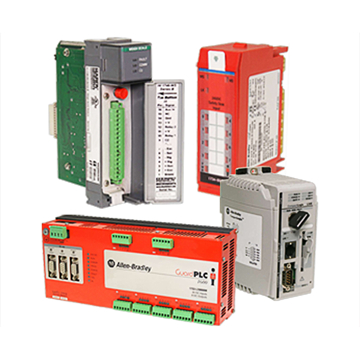Unlock the Secrets of Siemens Simatic S5: Discover Its Hidden Features and Revolutionary Impact on Automation!
The Siemens Simatic S5 series stands as a cornerstone in the world of automation, revolutionizing how industries approach process control and system integration. Launched in the late 1970s, this series has played a pivotal role in shaping modern automation solutions. This article aims to provide a deep dive into the Siemens Simatic S5 series, exploring its key features, specifications, historical significance, and diverse applications across various sectors. Whether you're an industry professional or simply curious about automation technology, this comprehensive overview will enhance your understanding of why the Siemens Simatic S5 series remains influential to this day.

Overview of Siemens Simatic S5 Series
The Siemens Simatic S5 series was introduced as a breakthrough in the automation landscape, marking a significant advancement in programmable logic controllers (PLCs). It was designed to meet the growing demands of industrial automation, offering solutions that combined flexibility, reliability, and ease of use. Over the years, the S5 series evolved through various iterations, adapting to the changing technological landscape and the specific needs of industries. Its architecture allowed for modular expansion, which made it suitable for a wide array of applications, from simple control tasks to complex automation systems. The S5 series paved the way for subsequent generations of automation technology, setting a high standard for performance and versatility.
Key Features and Specifications
One of the standout features of the Siemens Simatic S5 series is its modular design, which enables users to customize their systems according to specific application requirements. This modularity allows for easy upgrades and maintenance, ensuring longevity and adaptability in an ever-evolving industrial environment. The S5 series also boasts robust programming capabilities, supporting multiple programming languages, including ladder logic and function block diagrams. Its user-friendly interface simplifies the programming process, making it accessible even to those with limited technical expertise. Additionally, the S5 series supports various communication protocols, enhancing connectivity with other devices and systems, further solidifying its role as a versatile automation solution.
Historical Context and Development
The history of the Siemens Simatic S5 series is marked by innovation and adaptability. Launched in 1979, the first models were revolutionary for their time, offering unprecedented capabilities in automation technology. Throughout the 1980s and 1990s, the S5 series saw numerous enhancements, including improved processing speeds and expanded memory options. Major milestones included the introduction of new modules that catered to specific industrial needs, such as temperature control and motion control applications. By the early 2000s, while the S5 series had begun to be phased out in favor of newer models, its legacy continued to influence the design and functionality of modern automation solutions, demonstrating the enduring impact of its pioneering features.
Applications in Automation
The Siemens Simatic S5 series has been employed across a multitude of industries, showcasing its versatility in automation applications. In manufacturing, it has streamlined production processes by automating machinery and assembly lines, leading to increased efficiency and reduced operational costs. In the energy sector, the S5 series has been utilized for monitoring and controlling power distribution systems, ensuring reliability and safety. Its applications extend to the food and beverage industry, where it regulates processing and packaging systems, maintaining quality and compliance with safety standards. The adaptability of the S5 series means it can be found in diverse environments, from small workshops to large industrial complexes, proving its widespread relevance in automation technology.
Hidden Features and Innovations
While the prominent features of the Siemens Simatic S5 series are well-known, several lesser-known innovations contribute significantly to its effectiveness. For instance, the series includes advanced diagnostic capabilities, allowing for real-time monitoring and troubleshooting of systems, which minimizes downtime and enhances operational efficiency. Moreover, the S5 series supports various types of input and output modules, enabling integration with a wide range of sensors and actuators. This flexibility is crucial for industries that require tailored solutions to meet specific operational challenges. These hidden features exemplify the thoughtful engineering behind the S5 series, further solidifying its status as a reliable choice for automation solutions.
Legacy and Ongoing Significance
In summary, the Siemens Simatic S5 series has played a transformative role in the world of automation, setting the stage for future advancements in technology. Its modular design, user-friendly programming capabilities, and historical significance make it a crucial element in the evolution of industrial automation. The diverse applications across various sectors highlight its versatility and ongoing relevance. As we continue to explore the complexities of automation, understanding the legacy and innovations of the Siemens Simatic S5 series is essential for anyone interested in this dynamic field. This remarkable series not only revolutionized automation in its time but continues to inspire future developments, ensuring its place in the annals of industrial history.











commentaires